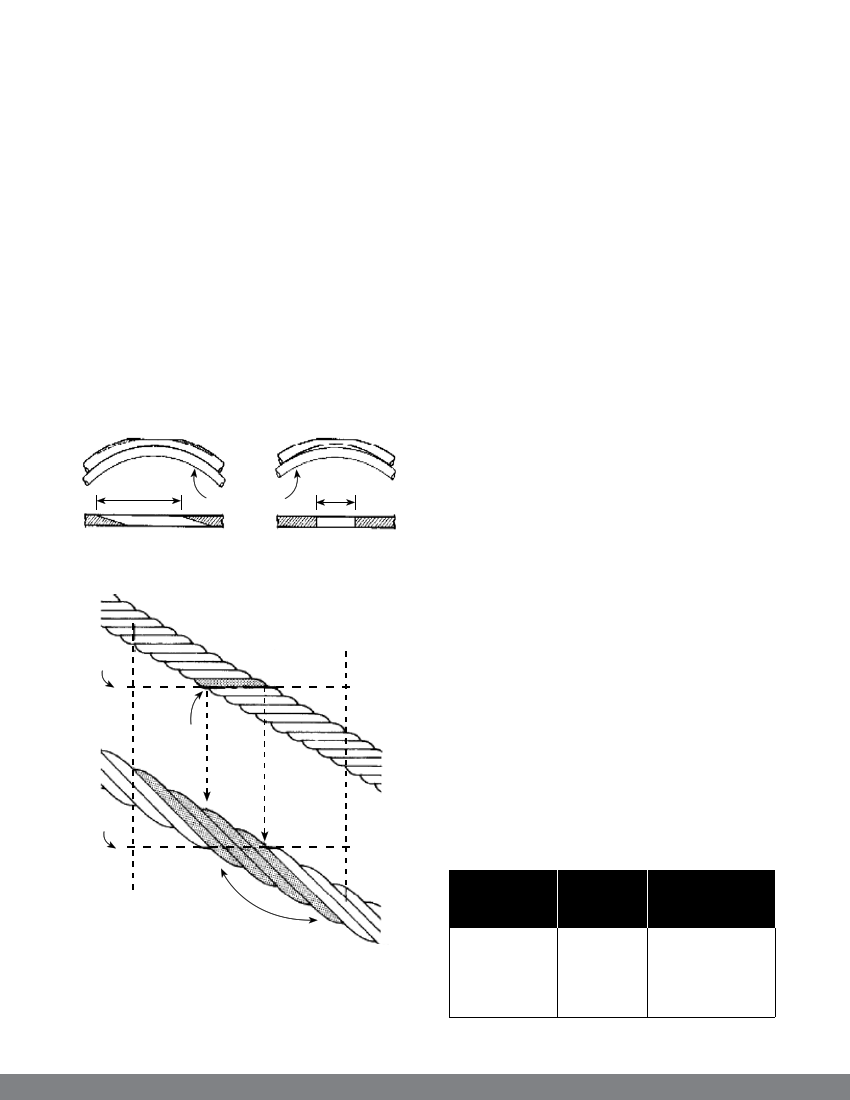
GRAVITY GOODS ROPEWAY
Regular lay means the wires in the strands
are laid opposite in direction to the lay of
the strands. Lang’s lay means that wires are
laid in the same direction as the strands
are laid. Mostly, right hand regular lay
wire rope is used for gravity ropeway. This
specification meets the requirements of
most of the applications and equipments.
The other lay specifications are considered
as exceptions and are not widely used
except for very specific purposes.
Therefore, particular specifications must
be requested when ordering wire ropes.
Normally, manufacturers do not tend to
produce specific types of wire ropes in
small quantities.
WEAR AREA
LANG
Supporting
inner wire
WEAR
AREA
regular
Rope
axis
a
Full wire
Regular Lay strand
b
Rope
axis
a
lang Lay strand
b
4 Full wires
Difference in abrasion characteristics
of Lang’s Lay and Ordinary lay ropes
Glossary of Terms Used
The differences between Lang’s lay and
ordinary lay wire ropes are:
1. the number of strands,
2. the construction of strands,
3. the size of the core,
4. the lay direction of the strand versus the
core, and
5. the grade of the carbon steel of the
wires.
N.B. Lang’s lay ropes are preferred over the
ordinary lay for the gravity ropeways because
it offers more contact area between the wire
and the bearing surface which increases the
abrasion resistance of the rope as compared
to an equivalent ordinary lay rope. Besides, it
is more flexible than the ordinary rope with
more resistant to bending fatigue resulting to
longer service life than the ordinary lay wire
rope.
13. Galvanisation: Galvanisation means zinc
coating of the wires, as the wire ropes are
exposed to the external environment all the
time, galvanisation is required to prevent it
from potential corrosion and rust. The extent
of galvanisation depends on the frequency
of the rope usage. There are two methods of
galvanising:
1. Galvanising after the finished wire has
been drawn, and
2. Galvanising before the wire is sent for
drawing.
The specification of zinc coating is IS:
4826/68 and API-STD 9A.
Weights of coatings are:
Wire ømm
1.25 – 1.40
1.40 – 1.60
1.60 – 1.80
1.80 – 2.24
2.24 – 2.80
Heavy Coatings,
gm/m2
“A-type”
180
190
200
210
230
Medium Coatings,
gm/m2
(Z –Type)
90
95
95
105
110
133